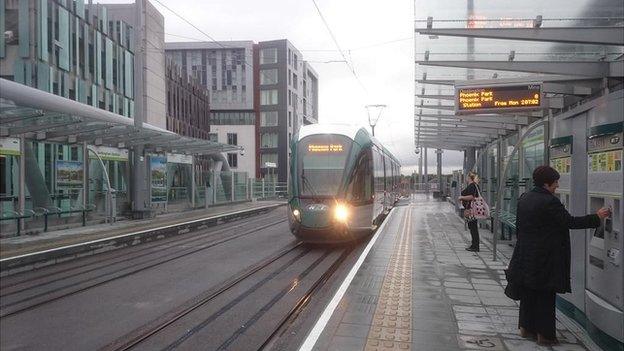Bristol transport: Will the south remain the poor relation?
- Published

Portway Park and Ride station opened in July
It may not feel like it to some, but Bristol is in a golden age of rail development - if you compare it to the past 100 years. The city's first new station for nearly a century opened on the Portway in July, spades are in the ground at Ashley Down, and another station has been promised at the city's arena in Filton. While these add to a well-populated network north of the Avon, there is not so much to look forward to south of the river. The two men responsible for transport in and around the city insist people living there still have reasons to be hopeful.
The current expansion of Bristol's rail network is "revolutionary" according to Dan Norris, the mayor of the West of England Combined Authority (WECA).
"But this isn't a record to boast about as it's nearly been 100 years [since a new station opened] so what is happening now is long overdue," he added.
A glance at the present and future rail map of Bristol shows an imbalance dictated by history.
One of the lines lost in the 1960s Beeching cuts brought passengers in from Radstock, through Whitchurch and Brislington. But you can only build new stations if the tracks are still there.
"Cleary disastrous decisions were made in the Beeching era," said Mr Norris.
"What an advantage it could have been if we could have got people travelling from Midsomer Norton all the way into Bristol via Whitchurch," he added.
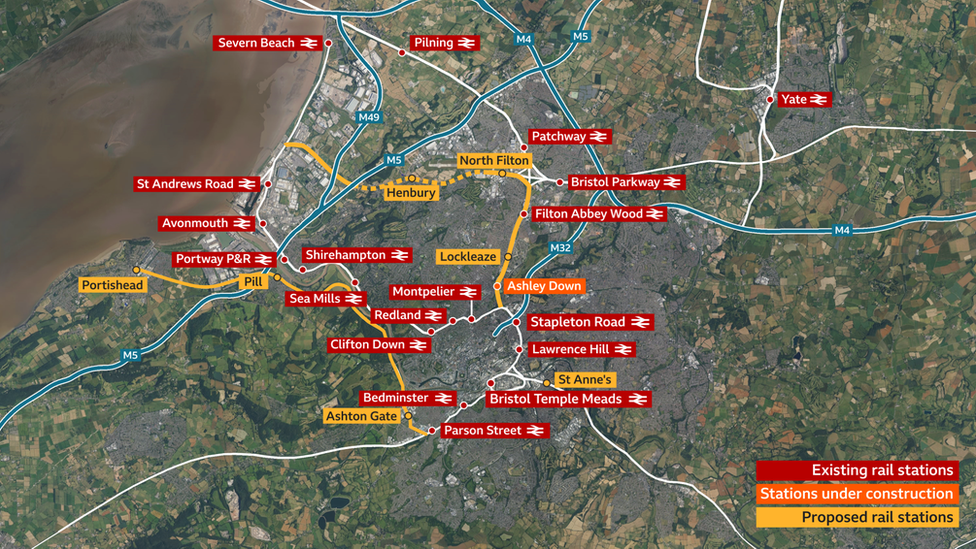
Much of the planned short-term future for Bristol's urban rail network adds to the network north of the Avon
The question often asked - and not just with transport - is why things take so long to get built in Bristol.
The city's leaders have considered opening a major concert arena near Temple Meads twice since the early 2000s, and twice that project has foundered.
For decades there has also been talk of reopening the rail line to Portishead.
"The Portishead line will provide opportunities for people in the south of the city, it's a growing town," said Mr Norris, himself a former south Bristol resident.
But if the line is already there, why is it taking so long to reopen?
It is a good question, said Mr Norris, who took over at WECA in May 2021.
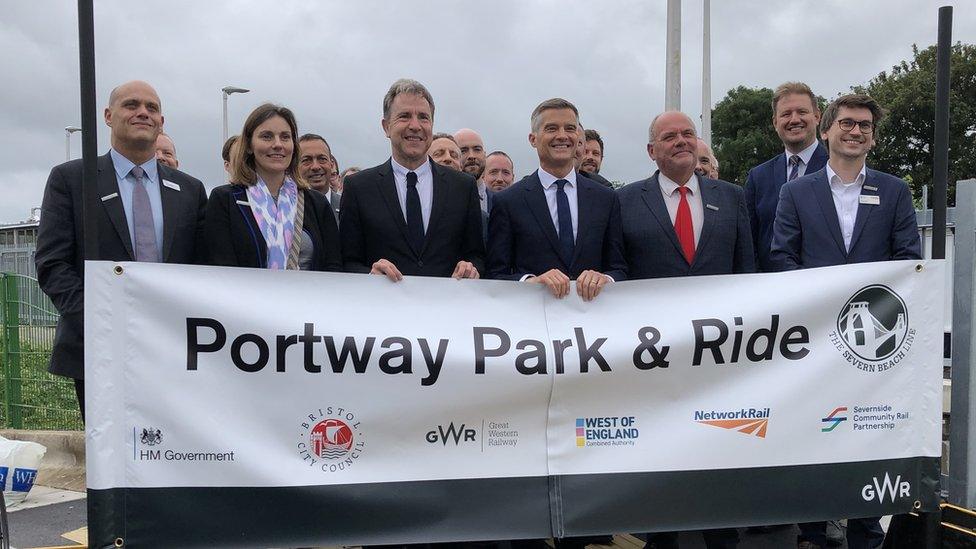
Transport Secretary Mark Harper officially opened the new Portway Park and Ride station
"There is a lot of health and safety legislation that was put in place after historic rail disasters. Public health has to come first.
"But it's a very good point. Why does it take so long to build railways here compared to other countries in Europe? It's a question I've asked many times," he said.
The line has faced "hiccups", some of them - Mr Norris claims - down to government "stalling" when it realised it had over-promised then faced a funding shortfall.
"Indeed, they [the government] came back to me and North Somerset Council and each of us gave an extra £10m to keep it on track, literally or metaphorically.
"I feel like we are within touching distance, but I'd be foolish to say in the light of that line's history that it's an absolute certainty."
'Ashton Gate makes sense'
One of the things a reopened Portishead line could deliver is a new station at Ashton Gate.
"There should be a station there," said Mr Norris.
"You've got Bristol City playing there, now the Bristol Bears. People should be able to arrive at Temple Meads then get a local train to the stadium.
"But more important than new stations are regular train services that are cheap and reliable," he added.
Don Alexander, Bristol City Council cabinet member for transport, said the authority had "long supported" the idea of reopening Ashton Gate - but there were hurdles.
"Where the rail line runs out of the station site, there is a road going across the line, which brings a lot of technical challenges," he said.
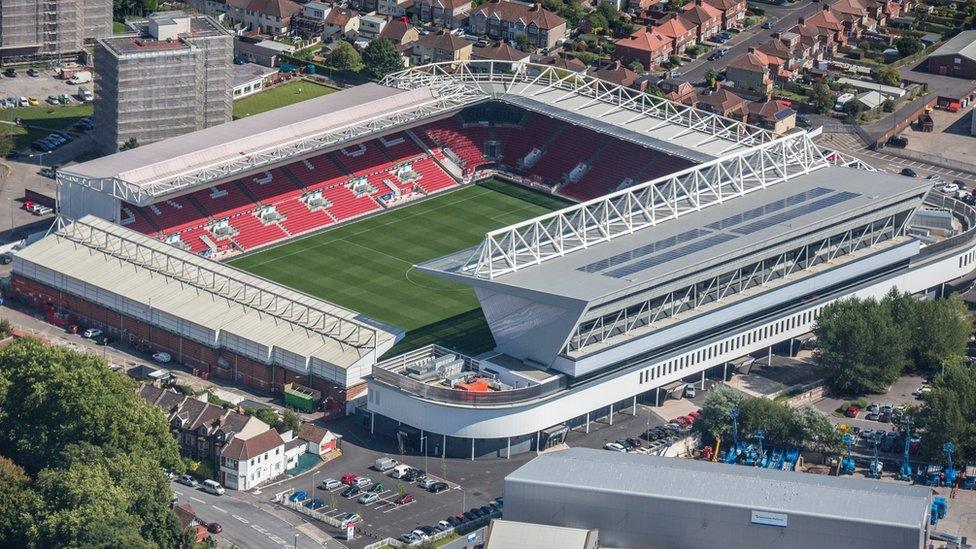
Ashton Gate stadium has been expanded, but there are no immediate plans to reopen the station nearby
There are similar logistical headaches at St Anne's, another possible south Bristol station.
"That's on the main line to London. Whenever you want a local stop on a line like that you face adjusting signalling and the track.
"A rail project like that very quickly goes into the millions or tens of millions," he said.
Residents of Ashton Vale, who lost their only bus service this year and say it has left them stranded, might welcome a station at Ashton Gate. But there are wider issues south of the Avon, said Mr Norris.
"South Bristol has been neglected for many years.
"When you look at statistics - the university entry for white working class men from south Bristol is the lowest, or very nearly the lowest, in England," he said.

Ashton Vale residents have said they feel cut off after their bus service was dropped
Responsibility for business and skills come under Mr Norris' umbrella, as well as transport. With that in mind, he said the opening of a £4bn battery factory in Somerset could be good news for south Bristol.
"As the crow flies Bristol south is the nearest really big centre of population [to the site], so I want people there to really benefit," he said.
A former rail line near Bridgwater could potentially be reopened and connected to the main line into Bristol, Mr Norris said.
"It's something I'm quite excited about," he added.
Losing out to Nottingham
Things for Bristol could have been very different, and Mr Norris said a painful memory which "still scars" was when the last Labour government made what would now equate to roughly £1bn available for a tram network between Bristol and South Gloucestershire.
It was given the name Supertram. But like the city centre arena, it never became reality.
"Bristol City Council and South Gloucestershire couldn't get their act together and couldn't take that plan forward," said Mr Norris.
"That money ended up going to Nottingham and you know what Nottingham has? An absolutely fantastic tram system.
"And not only are Nottingham's residents benefitting from that tram network that we could have had, but they get a lot of funding because it's profitable," Mr Norris added.
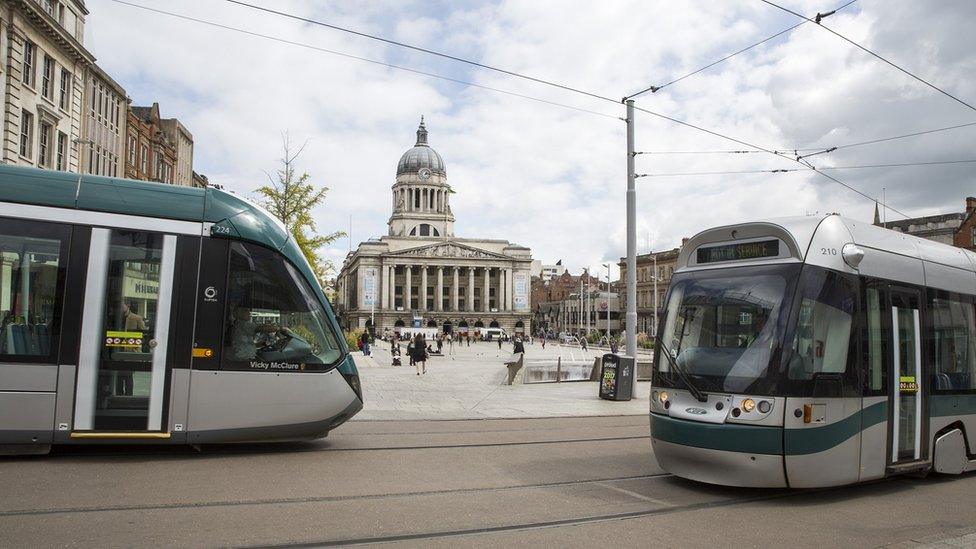
Nottingham's tram network was built with money which should have been Bristol's, said Dan Norris
Bristol - which lost its trams in 1941 - is something of an outlier among major UK cities.
Edinburgh, Manchester, Sheffield and Nottingham have trams. Newcastle and Glasgow have metros. Liverpool has the Merseyrail network.
Mr Norris and Bristol Mayor Marvin Rees have had well-publicised differences over the latter's plan to rectify that by creating a mass transit network, possibly an underground.
Mr Norris said building one was "unaffordable and unrealistic". Mr Rees said opponents were holding the city back.
Manchester went through the same debate, said Mr Norris, and opted for an overground network for financial reasons.
To counter that, should Bristol one day go with a 100% overground system, Mr Rees has asked residents to imagine major routes like Gloucester Road closed for long periods while it is built.
Debating the underground issue will soon no longer be Mr Rees' problem, with the city's residents having decided to end the role of elected mayor by May 2024.
After that, more difficult transport questions may come Mr Norris' way.
"Marvin has done some really good things," he emphasises. "And overall we do things really well here.
"The west of England is one of very few areas outside London and the south-east that contributes to UK GDP - but our public transport system does not reflect that wealth creation," he said.
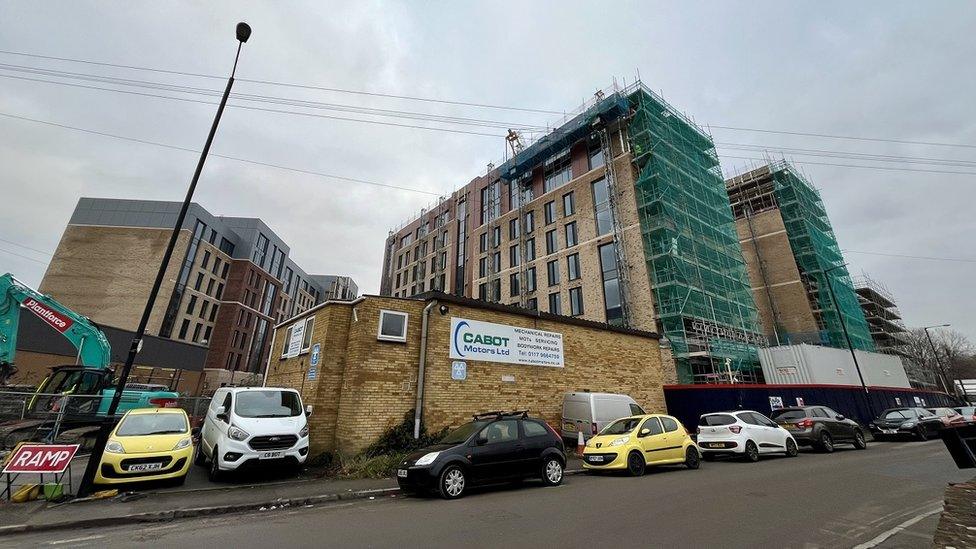
Thousands of new homes are being built in south Bristol, including these on Whitehouse Lane in Bedminster
Councils may be facing financial constraints which hold back transport ambitions, but the Bristol city centre skyline suggests it is a good time to be a property developer.
Stand in south Bristol's Victoria Park and look north and you will notice the traditional view of the centre and Clifton beyond is fast disappearing as tower blocks rise up.
Tens of thousands of new homes are either planned or being built on land off Whitehouse Lane and York Road.
Can some of the profits go back into the public purse to pay for the transport these new residents will need?
"Within any planning application we will ask about transport mitigation, and negotiate [with the developer] about making contributions towards the impact in terms of transport.
"That has to be appropriate though. It has to be relative to the size of the development and its impact," explained Mr Alexander.
There are positive things happening in south Bristol, added Mr Alexander, and more to come.
"At the moment we are working on the Bedminster Green project, external, which will reshape all the roads and give more access to the A38 and add more segregated bus lanes.
"We have aspirations to improve the Metro bus service out to the south.
"The Hengrove development on the former airfield will lead to more money being put into the local infrastructure.
"Then there is a mass transit system, where one of the proposed lines would head south out towards Bristol Airport," he said.
'We have not delivered'
Mr Norris said "politics" was the main reason Bristol appeared to lag behind similar cities.
"This isn't me making a party political point, because I think Labour politicians have been equally culpable.
"I'm judging it on a longer timescale than just the past decade. We have not delivered for this area.
"The lesson is not to just moan, but to do something about it now," he said.
A spokesperson for Network Rail, which is responsible for new rail lines and stations, said: "We are aware of interest in building new stations at Ashton Gate, St Anne's and Lockleaze.
"St Anne's has been subject to a Restoring Your Railway bid and the outcome of this is currently awaited from the Department for Transport.
"We are working closely with the Mayoral Combined Authority on a shared strategy for rail development in the Bristol area which is planned to involve a number of different workstreams, including looking at the feasibility of building the aforementioned new stations."
Factors involved in deciding where to build or reopen stations include what the best way to satisfy transport demand locally is, whether there is capacity on the rail network to add new stations, whether the investment can be justified in terms of future revenue and the availability of government funding, the spokesperson added.

Follow BBC West on Facebook, external, X, external and Instagram, external. Send your story ideas to: bristol@bbc.co.uk , external
Related topics
- Published6 October 2023
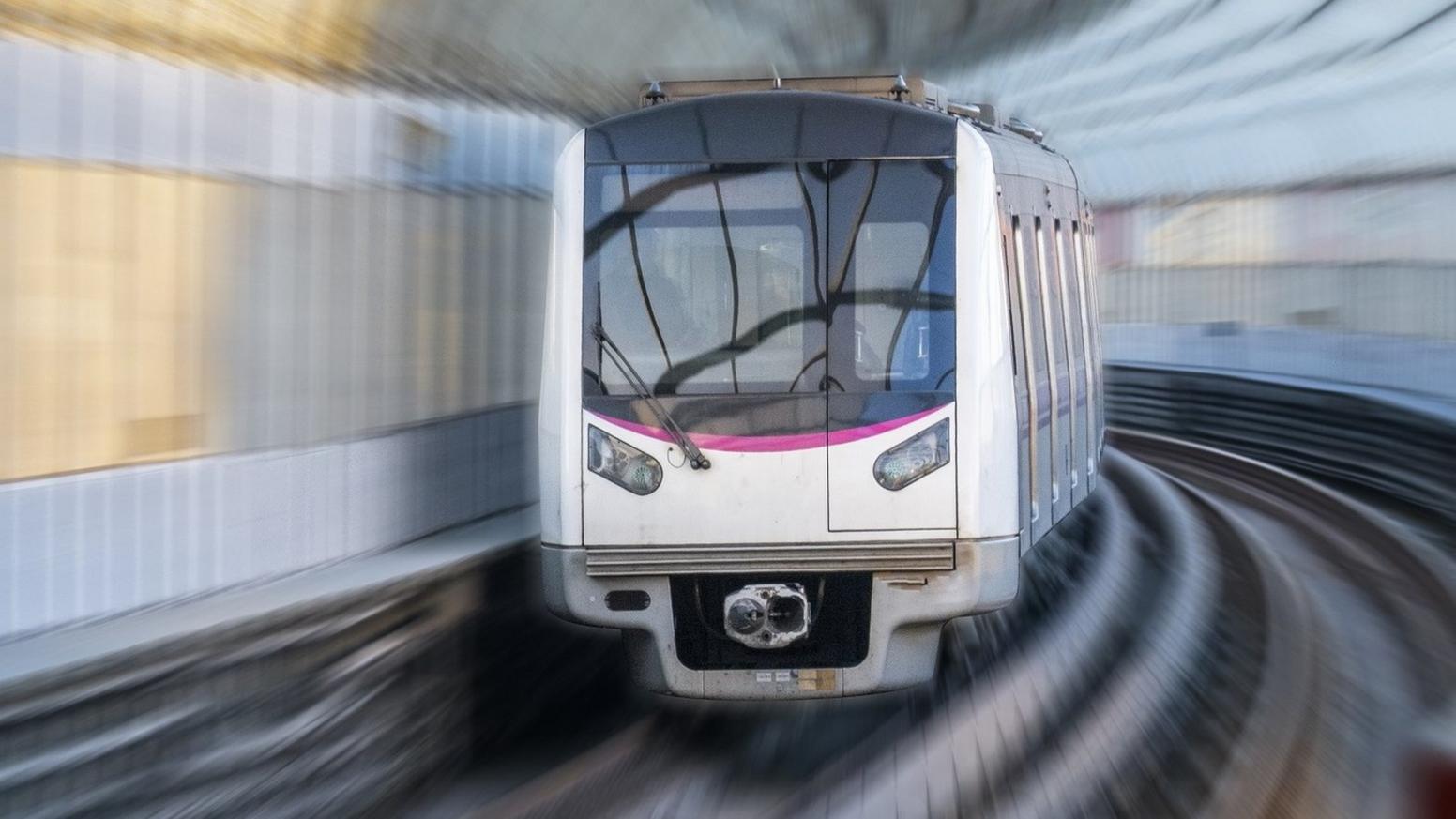
- Published6 June 2023
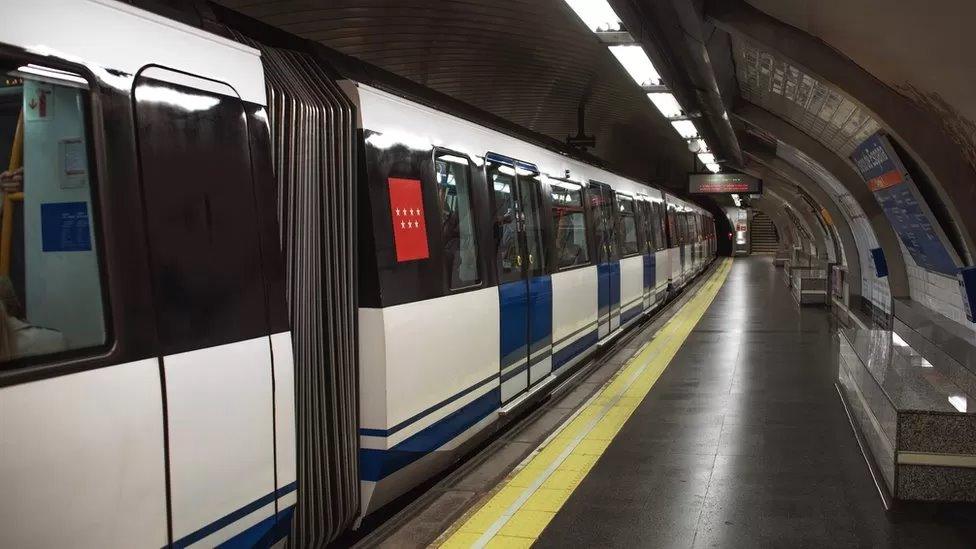
- Published27 July 2023
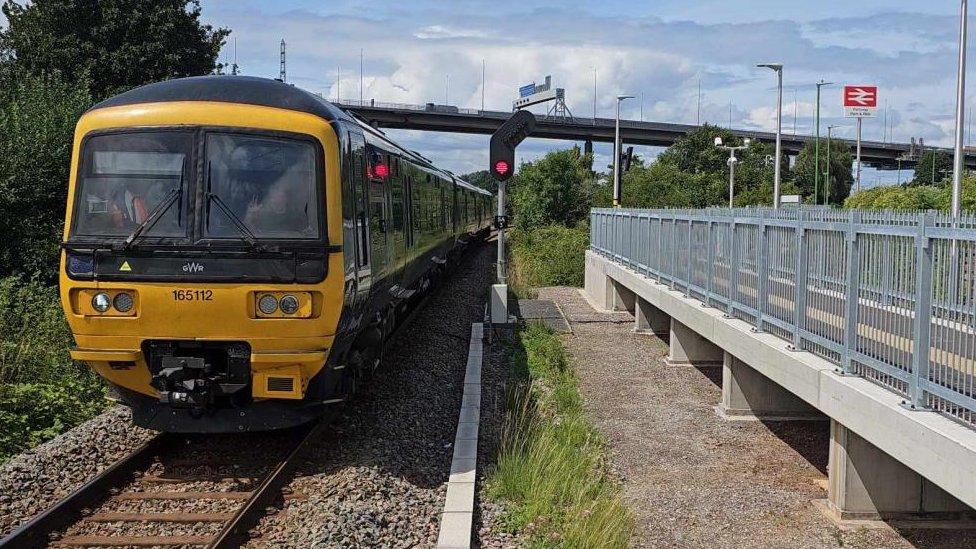
- Published7 March 2023
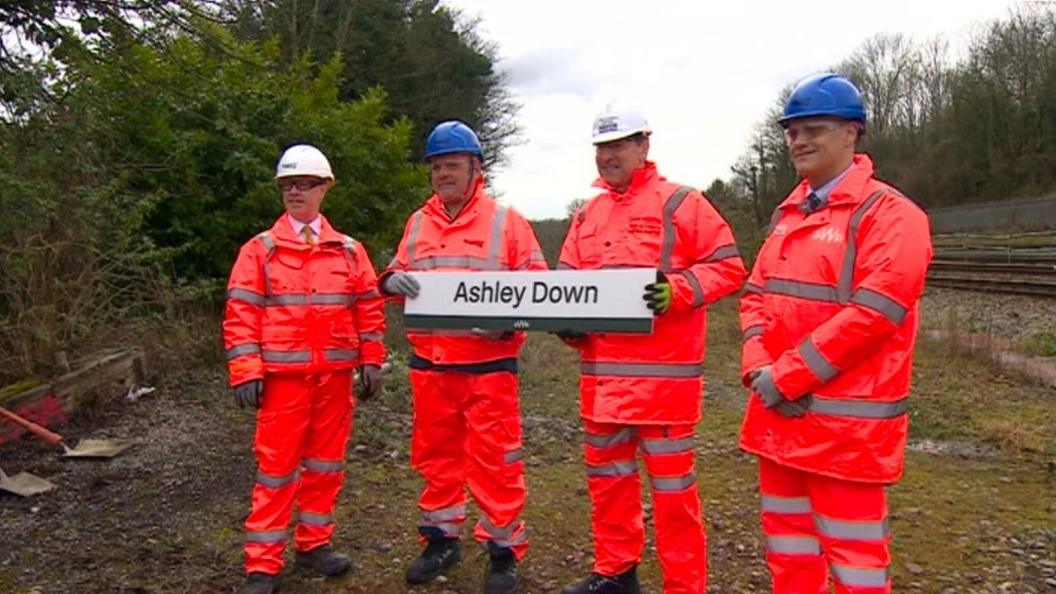
- Published27 July 2015
